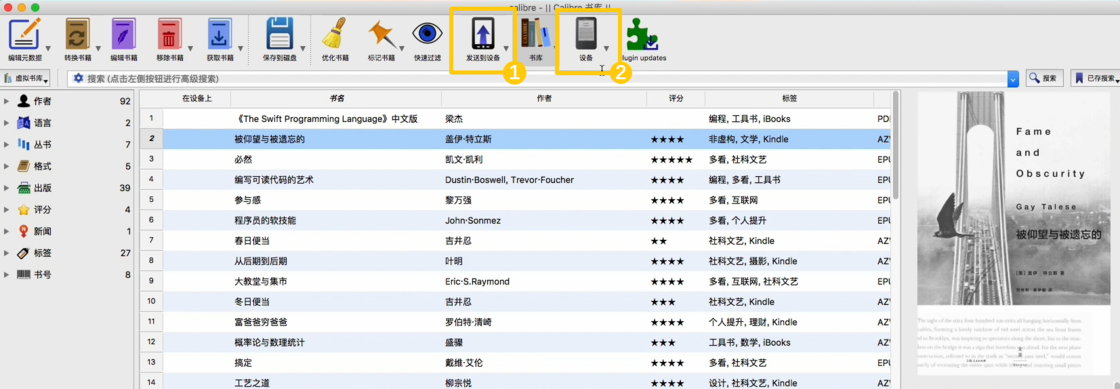
To open the book in the Finder, right-click on the book in the Library and choose Open Containing Folder.Īt this point, I open Amazon’s Send to Kindle app, which lets me add files to any of my registered Kindles and store them in Amazon’s cloud library for future access.

Once that wheel stops spinning, your book has been converted. (From this window, you can also apply changes to the book’s settings-for example, you can force text to be aligned left rather than justified, and the Kindle will honor this choice!)Ĭalibre will begin converting the book, and you’ll see a spinning circle in the bottom-right corner of the window next to the “Jobs” label. Converting is a multi-step process: First select the book in the Calibre library window, then click on the Convert Books item in the app’s toolbar, choose a new output format from the pop-up menu in the top right corner (I choose MOBI), and click OK. You can add a book to the Calibre library by dragging it in. Instead, I use it to convert books into different formats.

While Calibre fancies itself a sort of iTunes for ebooks, I don’t use it as a catalog. It’s a program that’s hard to love, because it’s a cross-platform open-source project and it really shows in the interface. So when I get an epub book I’d like to read, I need to convert that book before I can load it on my Kindle.įor this (and many other ebook related tasks), I use the free tool Calibre. Instead, Kindle supports the Mobipocket format and its Kindle-specific AZW successors. I like reading books on my Kindle, but one of the drawbacks of the Kindle platform is that it doesn’t support the epub book format. Warning: This story has not been updated in several years and may contain out-of-date information. Removing the database file first is not needed, as that step completely overwrites its content.Calibre: How I put epub books on my Kindle In fact, when "Restore database" is appropriate, you may also do only that step. opf files in the folders of each e-book within the Calibre database folder.) (This metadata is stored not just in the database but also in. This will re-import the e-books from the database directory, and all metadata about them that you might have entered before. If your e-book files are still all present in folders below your Calibre library directory, you can now also click on the dropdown arrow next to the button with your library's name in Calibre, and then choose "Library maintenance → Restore database".

Renaming or deleting the file containing your Calibre library will cause Calibre to re-create an empty database (a new file metadata.db) at the next start. Rename the file metadata.db to something else, such as metadata.db.old.


 0 kommentar(er)
0 kommentar(er)
